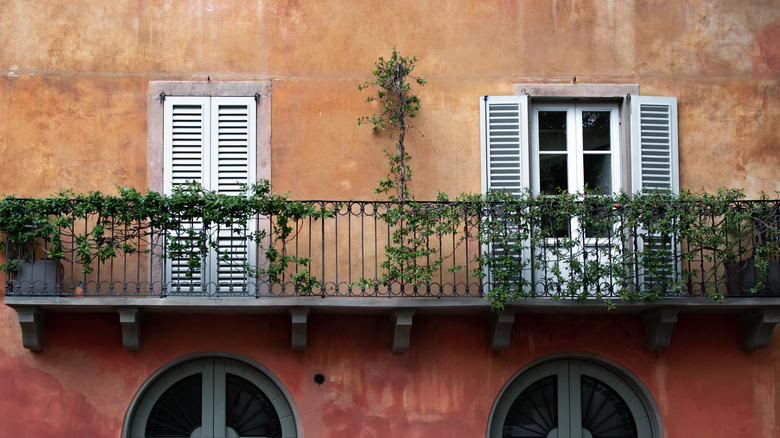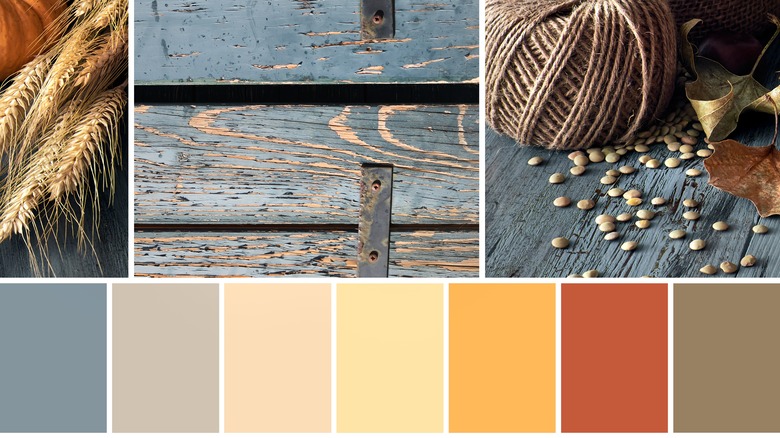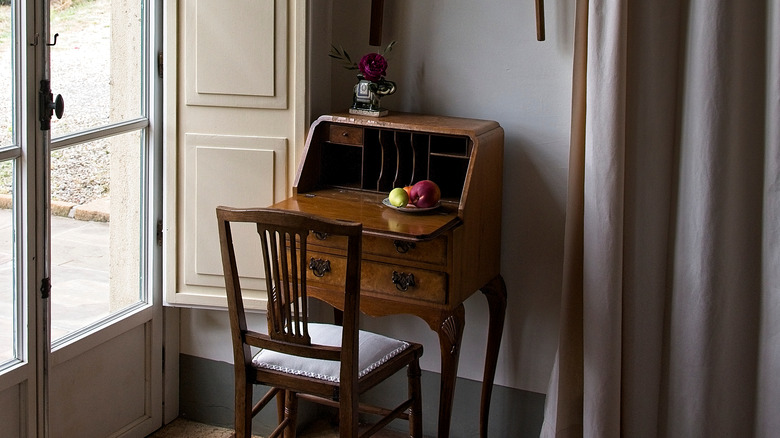The Best Color Palette For A Tuscan Home Decor Aesthetic
If you stepped foot in an American suburban kitchen in the aughts, chances were good that it was decked out in Tuscan-inspired décor. According to Design Works, the trend took off around the same time as the newfound popularity of granite countertops and open-floor-plan design at the turn of the new millennium. As the kitchen became a more social area of the home, Americans took steps to make it more decorated and welcoming. Enter: the Tuscan kitchen aesthetic. Ornate custom cabinets, textured faux-stucco walls, swirly wrought iron fixtures, travertine floors, dark woodwork, and cheesy wine motifs were suddenly everywhere.
Fast forward to the present day, and the once sought-after Tuscan kitchen looks heavily dated. In retrospect, the trend was so heavy-handed that it rarely reflected the actual look of real Tuscan interiors. However, the earthy color palette and warm, rustic style of this interior design still hold tons of appeal if done the right way. With a modern spin and a balanced color palette, you can create a chic Tuscan home décor aesthetic that's anything but dated.
The best shades to consider
To achieve a Tuscan aesthetic, fill your home with warm earthy tones, such as burnt orange, terracotta, olive green, and sandy neutrals. This is mostly the same color palette that has always been associated with the trend, but with some minor adjustments to give the final product a modern spin. According to Italian Bark, the best way to modernize the Tuscan home aesthetic is to brighten up all of the dark woods and moldings that were often incorporated into the trend with a light neutral shade of paint. As a result, the space will feel more open, inviting, and balanced.
Opt for a cream or light tan shade of paint on the walls for the best results, and incorporate the darker, earthier hues in your upholstery and décor. The most important thing is to keep your color palette balanced. Clean, light hues on the walls will allow darker areas of the room to make a statement.
Incorporate texture carefully
While adding a Tuscan color palette into your décor, it's also important to consider texture and form to avoid looking dated. Instead of the maximalist approach to the old version of the trend, which often incorporated textured walls, aged terracotta, elaborate ironwork, and countless other heavy textures, Realtor recommends choosing flat-painted walls and a toned-down aesthetic, with one main textural element as the focal point of the space.
Feel free to still incorporate old-world-inspired textures in your house, such as antique wood, tile, and stone, but bring them into the current era by surrounding them with modern fixtures and a lightened-up palette. As for the scrolled wrought iron light fixtures that were often featured in the early 2000s Tuscan-style home décor, swapping them out for iron fixtures with more modern geometric silhouettes will help achieve a more modern spin on the look, according to Realtor. But, again, the aim is to pay homage to the historic look without looking stuck in the past.


